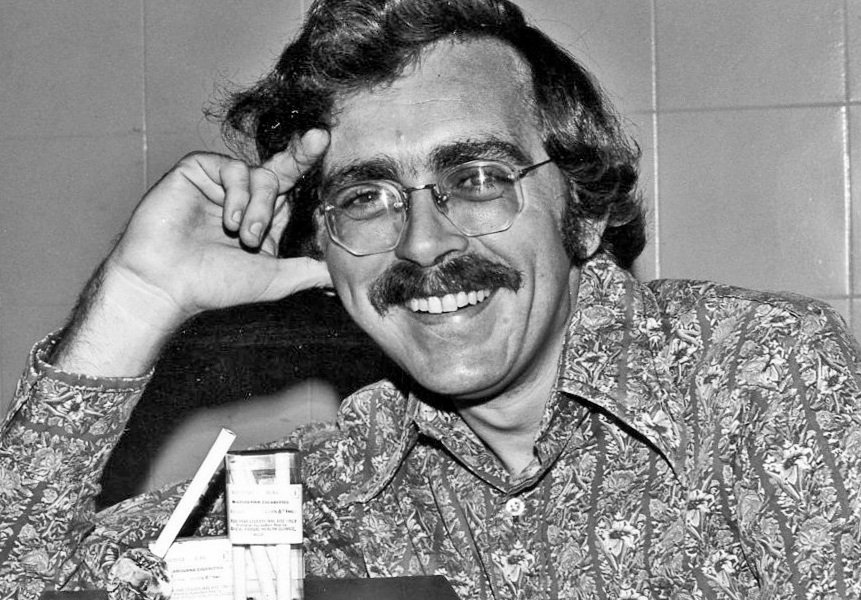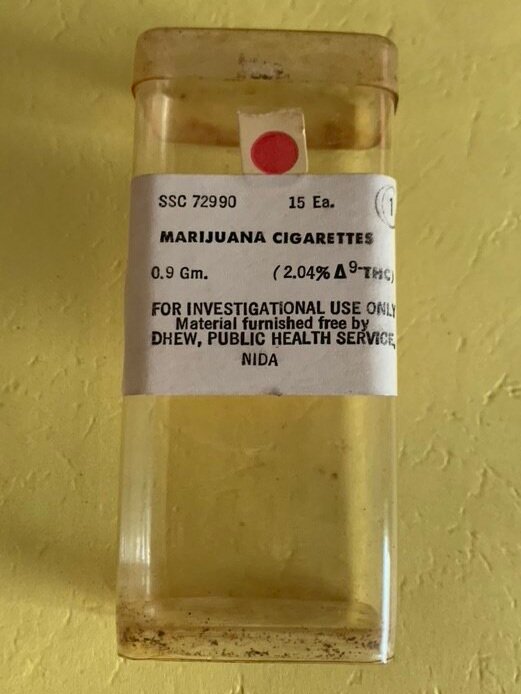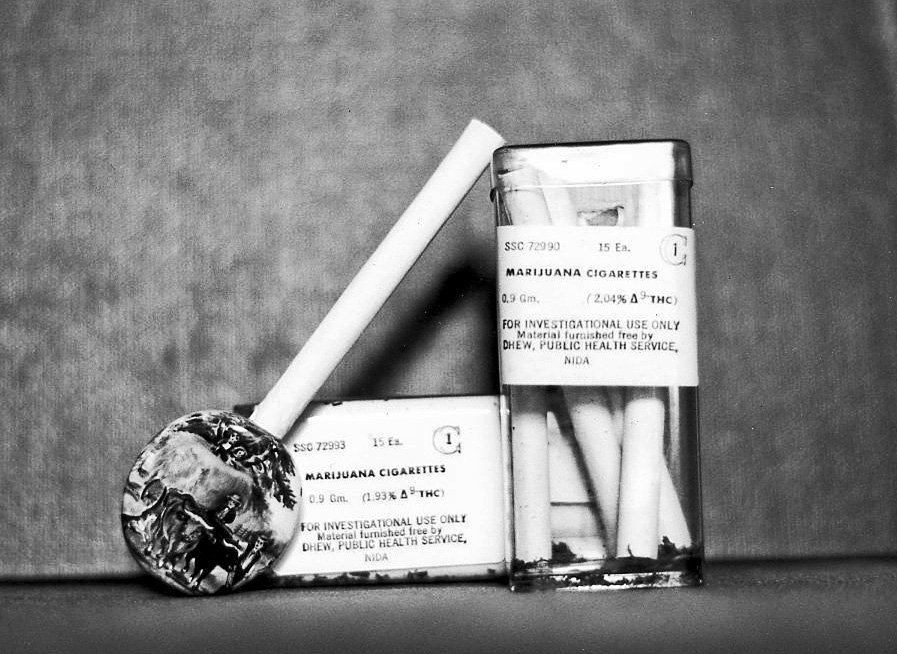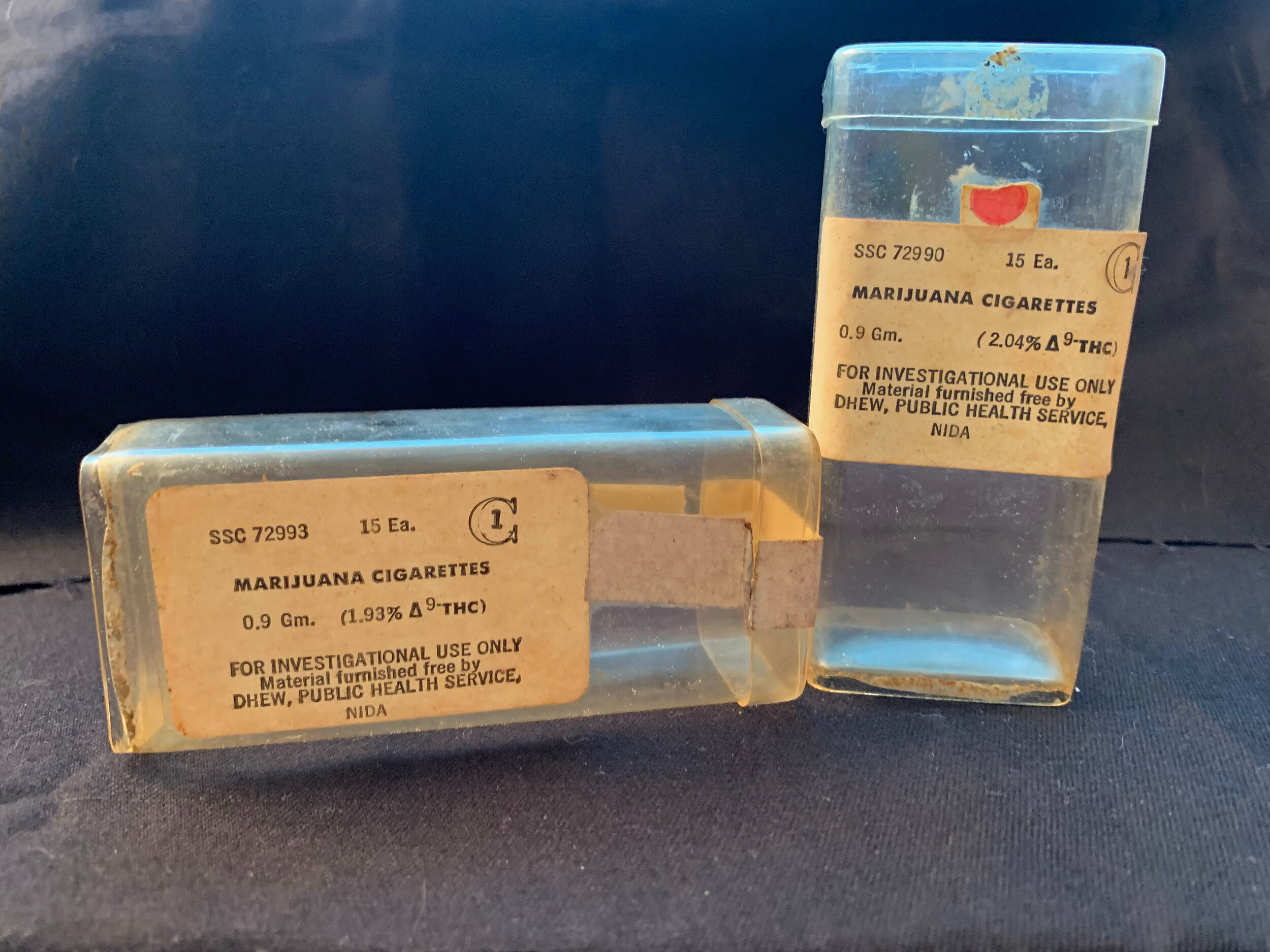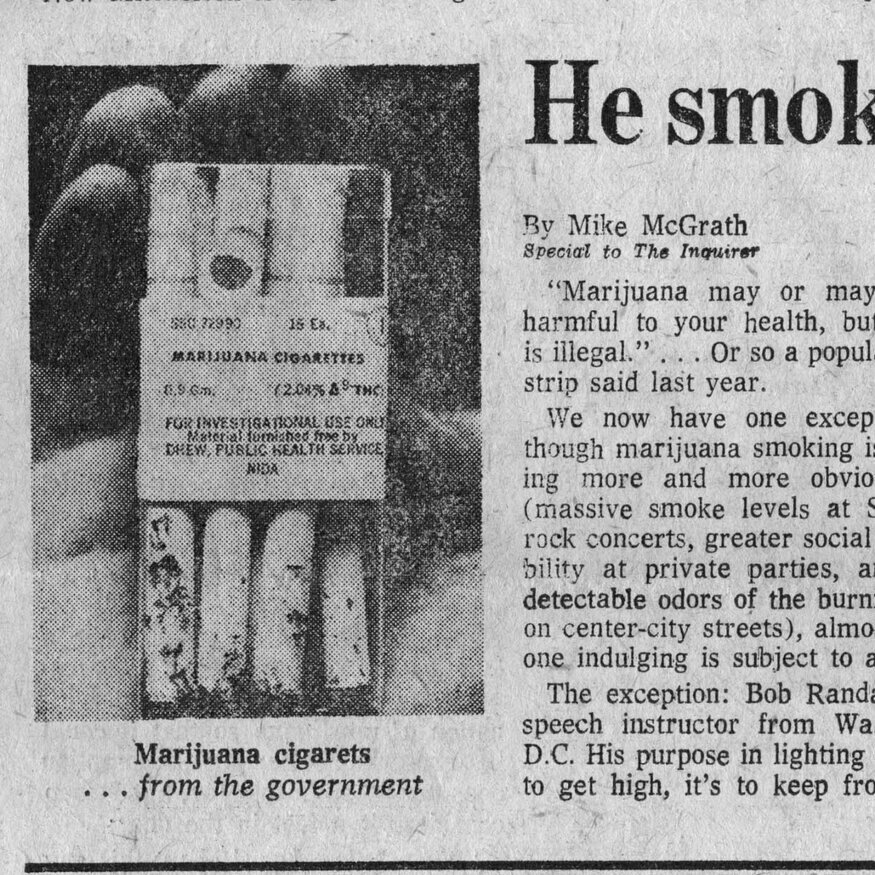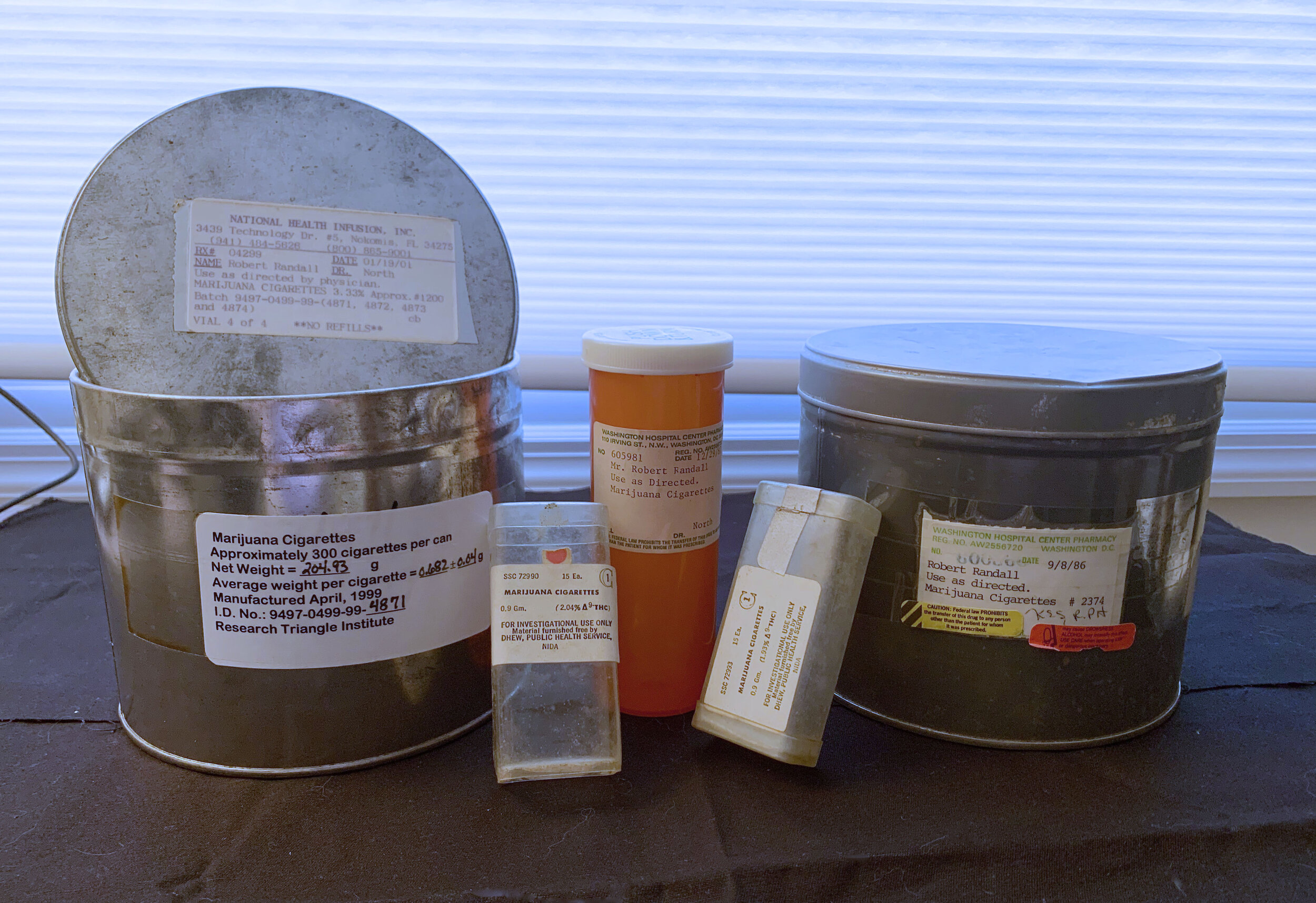Those curious plastic cases
November 12th marks the 47th anniversary of my late husband’s first take-home supplies of cannabis. It was 1976 and medical cannabis use was virtually unknown, its illustrious history stuffed into The Memory Hole by Harry Anslinger and his ilk. When Robert walked out of his doctor’s office that day with a small plastic case filled with 15 perfectly rolled cannabis cigarettes, he was shattering the absolute medical prohibition of cannabis that Anslinger had so meticulously crafted. Robert was, literally, the only individual in the U.S. legally allowed to possess and medically use cannabis. The medical cannabis movement had begun.
Today, most cannabis reformers are familiar with Robert Randall’s story and might think of him with the six-inch round canister that held 300 machine-rolled cannabis cigarettes. But before the iconic silver canisters, there were the small plastic cases in which he received his cannabis for most of the first year of his legal access. From 1978 until 1982, he would receive his cannabis in a traditional brown prescription bottle from a series of different pharmacies specially authorized by the DEA. Finally, in 1982, he began receiving his monthly supply in the canisters.
The design of those first plastic cases harkens back to another time that supports the federal government’s illusion of cannabis as a dangerous drug. They are small (3.375”L x .75”D x1.5” W) and were designed for research projects with a small number of “subjects”. They were never intended for an actual patient or long-term use. Each has a printed label with the C-1 logo showing it is a Schedule I drug. They are appropriately noted as Marijuana Cigarettes but oddly the spelling is with a “j” not the normal “h” that is seen in other federal projects. The weight of each cigarette is noted at .9 grams and the THC potency is provided. It seems ridiculously low by today’s standards (1.93% to 2.04%) but it worked.
Finally there is the disclaimer: “For investigational use only. Material furnished free by DHEW, Public Health Service, NIDA.” I found it odd that they felt the need to say “furnished free”. In the 20+ years that Robert received federal cannabis, he never paid a penny. At one point, we offered to pay and asked the government to establish a price. They wisely refused. Establishing a price for this plant that is often called “weed” would jeopardize any number of falsehoods, from the inflated value of seized cannabis to the lucrative government contracts for an elite corps of government researchers.
Robert saved these cases and now, in celebration of this anniversary, you can have one for just $47.00. Check it out at the Medical Marijuana Memorabilia store.
